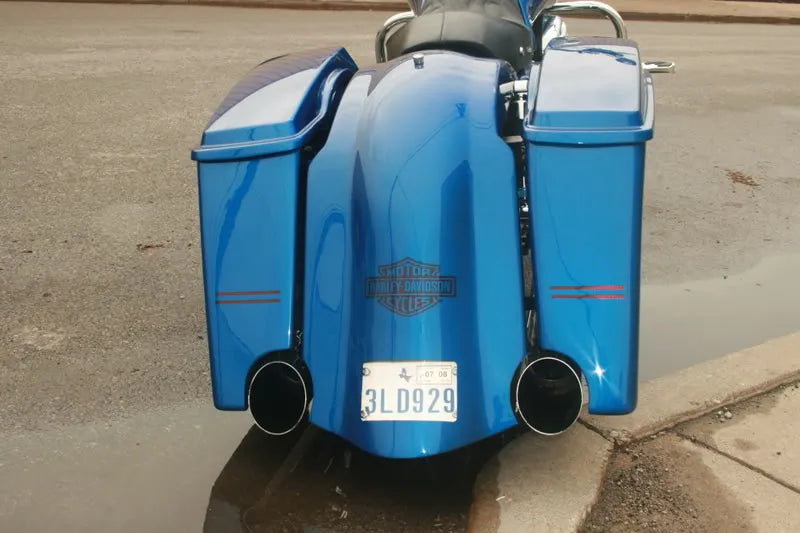Although flush mounting lenses into steel fenders does require more work than a fiberglass install, the steps and procedures are nearly the same. Here is how we created Shannon's flush mount Road King fender.

1) The first step to installing a flush lens is to pre-form and shape your lens material. Because steel fenders are generally more narrow than fiberglass fenders, the shape of the lens material is much more crucial for a steel installation. *Note the "lip" around the lens. This lip will be used to adhere the lens to the fender, whereas a fiberglass "shelf" would be used in a 'glass installation.

2) After cutting fender to accept lens, test fit lens into fender.

3) Using the lip around the lens, adhere the lens material into the fender. Be sure to properly sand the contact points of the lens as well as the fender in order to achieve proper adhesion.

4) Now you will bodywork the lens into the fender. Once installed, the lenses should initially sit higher than the fender. This height difference will allow you to sand down the lens material to match the shape of the fender.

5) *Note: Sanding the lenses will naturally put sand scratches in the fender. These scratches will eventually work themselves out as you progress to finer grit sand paper. Bad Dad uses anywhere from 80-320 dry grit paper during the installation process. As you move towards paint, it is advised to switch to a wet sanding application of both 400 and 500 grit papers. Lenses will eventually return to their original clarity once the fender and lenses have been clear coated during the paint process.
6) Backside of fender with lens installed.

7) Place refractor between lens (pictured) and LED board (pictured in step 7). The refractor is a prismatic sheet that helps disperse the light through the lens material.

8) Now you will need to build your LED assembly. For a custom shape such as this cross, the entire light will function as a run light, while the center section will intensify for a brake light and the sides of the cross will intensify to indicate a left or right turn. The LEDs will need to share a common ground and common low intensity wire, however, they will have their own individual brake and turning wires.

9) Next you will install your LED assembly into the fender.

10) Finally, you will finish with any final body work and then send the fender through the paint process.


